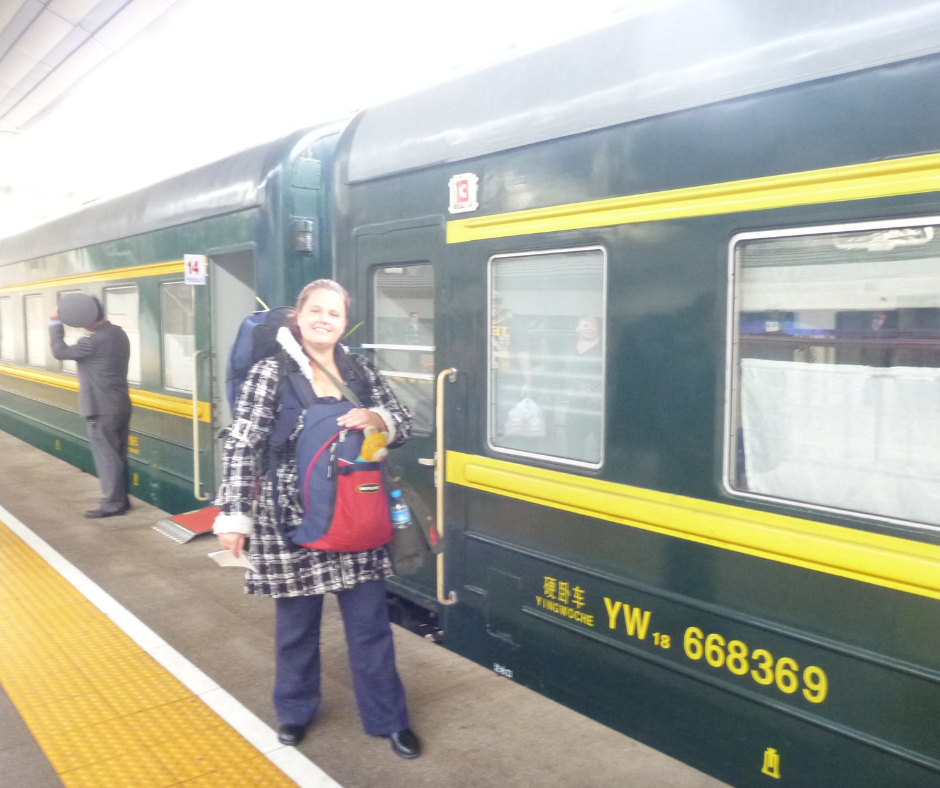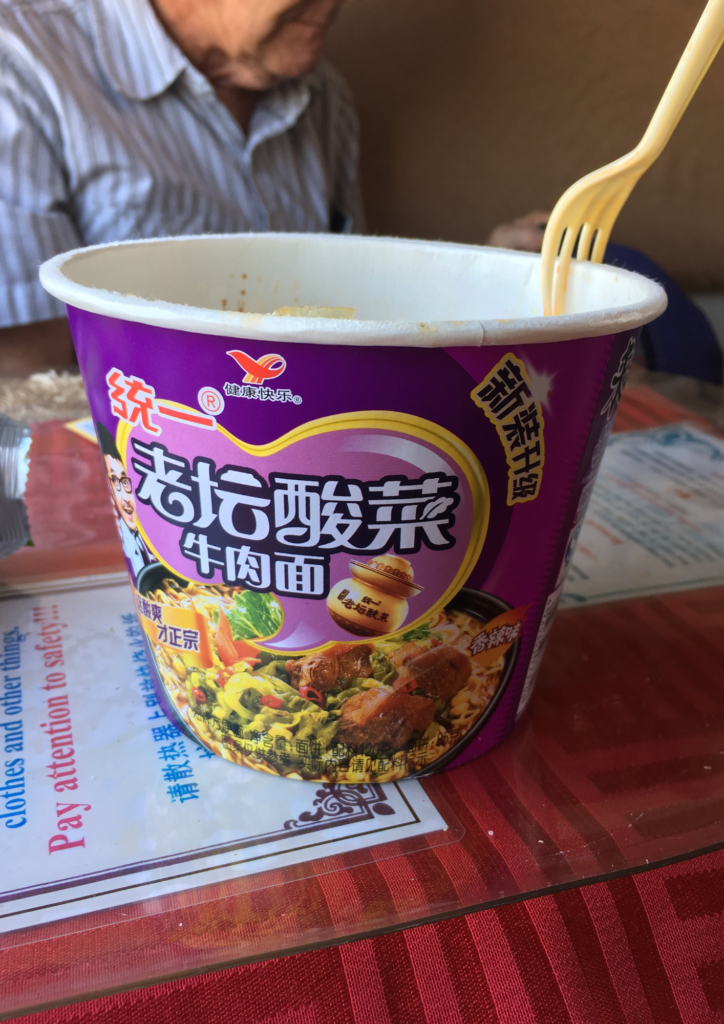Trying to catch a train in China can be a somewhat daunting experience, from the preparation, to getting a ticket and even to get getting a meal onboard. In a country where there is often little to no English spoken, and miles of red tape to deal with, catching a long-distance train seems like a veritable nightmare at times. I’m hoping this article will make things a little bit easier.
Getting a ticket
Sounds easy doesn’t it? The best and easiest way to get a ticket is to find a reputable Chinese Travel agency online and ask them to get the ticket for you. You can either then go and collect the ticket from them in China or sometimes they will send them to the hotel you are staying at to collect. If you can’t manage this for whatever reason, you will need to have everything written down before going to the station to purchase the ticket. Items you should have written down in Chinese are:
- From & To points – I.E – Beijing to Xi’an
- Seat Type – Sitting, Hard Couchette, Soft Couchette
- Upper or Lower Bunk – if the train is overnight
- Exact train number and time of departure if known
- IMPORTANT: Even for domestic services you will be required to show your passport and Chinese Visa

Boarding
Most eastern Chinese Railway Stations are chaos at the best of times, so set your time of departure from the place you are staying with this in mind. Depending on how big the city is, you will have many obstacles to overcome. I’ll use Beijing as an example, because it’s the biggest city I’ve been to in China and if you can handle that, its all down hill from there. You will either need to get a taxi or the metro, if you get a taxi make sure you have the correct station written in Chinese for the taxi driver to take you to. If you are getting the metro, be prepared to go through security when entering the stations with all your luggage and for a bit of a hard slog. Which ever method you choose it is imperative that you make sure you are headed to the right station. Many Chinese cities have more than one station, Beijing for example has 4 stations! Even a smaller place like Turpan has 2 stations.
Upon arriving at the station, you will need to show your ticket, passport and Chinese visa at the window before proceeding inside the station. The attendant behind the window will stamp your ticket, with out this stamp you will not be able to board the train. You will then need to proceed through security before entering, and yes, it is just as bad as airport security. There will also be a thousand locals trying to get through and they will push and shove you out of the way and push in screaming at the top of their lungs. Relax, it’s China it’s part of the culture and the experience.
Once you get through the mayhem, find out where your waiting room is. Think of the Chinese train station as kind of like an airport. When you board a flight, you sit at a waiting room, or gate it is the same with Chinese train stations. The big stations will have the schedule boards cycling between Mandarin and English, the little ones won’t, and you may need to ask. (Just show your ticket to an attendant and he will no doubt point you in the right direction.) Even at the smaller stations you should be able to see your train number on the boards, which will be the only thing in English. If it’s a small station there is probably only going to be one gate, so don’t panic. You will be able to tell when your train is boarding when the line your train number is on starts flashing green.

On Board
This will vary depending on where you are going and how long the trip is, but for the longer trips you will usually be in a berth of 4 people of mixed sex. Two bunks up and two bunks down. If you are on an overnight journey, I would highly recommend a soft couchette, I’ve only ever gotten the soft couchettes and even those are pretty hard, a hard couchette seat must be a literal block of concrete.
At one end of the carriage there will be a samovar with free boiling water, this is the only free thing on the train besides the toilet. There will be a toilet at each end of the carriage of the squat variety and if your lucky one may be even an upright toilet, but only if you’re lucky!
Smoking is allowed between the carriages, which is pretty awful if you’re at either end of the carriage as it will filter in. If possible, try to get a bunk in the middle somewhere between 12-20 is a good bet. If you can avoid carriage 1 and get a carriage towards the back you will be in for a better sleep as you won’t be right behind the engine, trust me some Chinese train drivers are very horn happy and insist on blowing the whistle all night for no apparent reason.
Supplies
Bring Toilet Paper! I say again, bring toilet paper! I don’t know what the Chinese do for this, but there never seems to be any! You should always have your own while traveling in China, but especially on the train.
Concerning food, there will usually be two attendants pushing trolleys up and down the carriage infrequently. One usually has trays of fruit, the other junk food and soft drink. Some trains have a restaurant car, but the food is very hit and miss. The menu is always only in Chinese and they frequently run out of everything. If it is a long-distance train, bringing some food along is a safe bet. Two-minute noodles are a good buy, you can use the free hot water to make them. If you are planning a long journey through China and you don’t like these, you may just starve.
Leaving the train and moving on
Unless you’re a tour leader like me, chances are you won’t know when you’ve arrived at the station. Chinese trains are frequently late and don’t keep to the timetable well. The best advise I can give is to download the maps.me app on your phone and download China so you can track where you are at all times. (It doesn’t require an internet connection provided you download what you need before commencing your journey) The attendant should take your ticket when you board and give you a plastic card to hang onto. This is how they know who is getting off where. I wouldn’t rely on them letting you know, even though they always do, sometimes it’s at the very last minute and you may not get time to pack up and get off! Ctrip.com is also a good way to get the train timetable in English so you can monitor where you are – you can also book tickets here, but I’ve never done this so have no idea how reliable it is.
When you get off at your station, follow the exit signs, EXIT is likely the only English word at the whole station and most stations only have one exit. Most big stations will have taxi’s waiting around when the trains get in, so if this is your plan, make sure you have the name of where you’re going written down for the taxi driver in Chinese as he will no doubt speak no English. At smaller stations, please note taxi’s may be your only option, some Chinese stations, are a long way from the actual town, Turpan station for example is 50km from the town in the middle of the desert. Make sure you research where the station is, and you have plenty of cash on you as in these circumstances a taxi is the only way to get into town.

Hopefully, now you feel like when in China you can handle a Chinese train journey – for the most significant stops on the Silk Road in China, please see the companion blog: Chinese Silk Road Towns.


